Cannonball Man holds our past in his hands and heart
Story by Buddy Eiland
Photos by Graham Hadley
Submitted Photos
Searching for history can become a lifetime obsession. Just ask Steve Phillips. Although the guns of the American Civil War fell silent in 1865, Phillips has spent more than 50 years searching for the cannonballs and artillery shells, along with other artifacts left behind from that great conflict. In the process, he has become a knowledgeable student of Civil War history and has built one of the most extensive private collections of its artifacts in existence.
Phillips is a retired professional diver, having owned and operated Southern Skin Diver Supply Company in Birmingham for many years. His sons, Spencer and Forrest, still operate the business, and both are expert professional divers.
After leaving the Air Force and before he became involved in the dive business, Phillips was in the office machine business in Birmingham. He and his wife, Susan, live on a comfortable acreage straddling the St. Clair/Shelby County line. Their property has a lake, a creek and a secret mountain waterfall. Long ago, Native Americans lived there, and he and his family have found thousands of stone points over the years that they left behind.
Phillips has spent years reading, researching and learning where to look and how to find Civil War relics and artifacts. Searching by metal detecting on private land permissions and diving in public waters, he has found about half of his collection.
The rest he has bought from other collectors, dealers and museums selling surplus items from their collections. Although his collection contains an unbelievable variety of artifacts, Phillips says, “I’m really all about cannonballs and artillery projectiles.” Learning from an early mentor, Tom Dickey of Atlanta, Phillips became an expert at disarming and preserving artillery projectiles. (Dickey is the brother of Deliverance author James Dickey). Over the years, he has disarmed and preserved over 2,000 cannonballs and artillery shells, developing his own methods from trial and error along the way.
The preservation is necessary because the iron will deteriorate from exposure to the air after being in the ground or water for so many years. The disarming process is extremely dangerous, as, even after over 150 years, the black powder sealed inside can still be viable and can explode if improperly handled.
He has designed a way to disarm projectiles safely and remotely, using a shed about a hundred yards behind his house and barn with a drilling apparatus controlled by ropes and pulleys to allow him to maintain a safe distance from the operation. “I don’t recommend people try this,” he says. “I’ve never had one to explode, but I treat every one like it might.”
After drilling into a shell, the black powder can then be safely washed out. Phillips uses a process of electrolysis to remove rust and scale that results from many years in water or in the ground. Then he boils the shell, usually several times, to remove salt and sulphites from the iron and help stabilize it. Finally comes a coat of preservative to complete the process.
Interesting among Phillips’ extensive and quite varied collection is probably the greatest number of “war logs” in any private collection. These are tree trunks from the Battle of Chickamauga, Georgia, that have artillery shells embedded in them. They speak to the intensity of the battle and were obtained from Tom Dickey’s collection after his death and from a museum in Atlanta.
The Enfield and the Coal Torpedo
What does he consider the most valuable item in his entire collection? Phillips is quick with an answer. “Monetarily, or to me personally?” he asks. “Probably money-wise would be the coal torpedo because it’s so rare. To me, personally, it would be my great-grandfather’s Enfield rifle that was left for me on the battlefield at Gettysburg. Of all the hundreds of items in my collection, it would be my favorite. It’s not the rarest, but it’s my favorite,” which leads us to two of Phillips’ most intriguing stories about his collection.
Rifle returns ‘home’
Some years ago, Phillips was attending the Nashville Relics Show, displaying some of his cannonballs and other items from his collection. “I subscribed to a magazine for The Horse Soldier, an antiques dealer in Gettysburg that sells relics and other artifacts from the Civil War. I was looking at a copy of the magazine, and, normally, I would just look at the cannonball and artillery section, but I was bored, and I began to look at other sections.
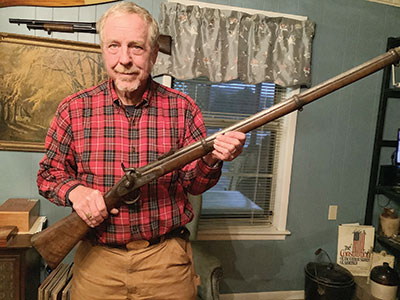
“I saw a listing for a British-made Enfield rifle, a very well-made rifle, better than most people had. On one side of the stock were carved the initials “JCD,” and on the other side was carved, “Co B 44th Ala Infantry.” It was identified to a Private/Corporal John C. Deason of Company B, of the 44th Alabama Infantry. John C. Deason was John Columbus Deason, my great-grandfather on my mother’s side of my family.”
Deason fought in the battle of Gettysburg in the Civil War as a member of Company B of the 44th Alabama Infantry. They were involved in the part of the battle known as Devil’s Den. The fighting took place in close quarters among some large rocks. The rifle was picked up by the owner of the Slyder farm, which was part of the battlefield. It was missing the ramrod, and because of the close quarters of the fighting, the ramrod was likely bent, rendering the rifle useless. Without the ramrod, it couldn’t be reloaded, so he probably dropped it, picked up another rifle and continued to fight.” About 130 years later, Slyder family descendants sold their collection of relics collected after the battle.
Phillips contacted The Horse Soldier, expressing an interest in buying the rifle. Told that the rifle had been sold, he said he would like to contact the buyer and try to purchase it. “Don’t let him know,” he was told, “because he is a Yankee, and if he finds out you want it, you’re not going to get it.” He backed away from trying to buy the gun, and about five years later, he received a call from The Horse Soldier, asking if he was still interested in buying it. “I told them I was, so I bought it and brought it home.” This special rifle now occupies a place of honor, hanging over the mantle in his den.
Rare find
The coal torpedo Phillips found on an underwater dive. “I picked it up and thought it was just trash, but I kept it because I didn’t want to keep hearing it on my metal detector. I had found a 12-pound ball that day, and when I began to start cleaning it up, I threw the ‘trash’ into the tumbler with it to help knock some of the rust off.”
The tumbling cleaned rust from the odd piece he had found as well, and he noticed what looked like copper in the side of it. Comparing it with several artillery fuses from his collection, he determined that it was, indeed, a fuse plug. Taking the object to his veterinarian, who X-rayed it for him, he determined that it was hollow. Further research determined that what he had found was a coal torpedo, used by Confederate spies in the Civil War.
It was cast from iron in the form of a lump of coal, filled with four or five ounces of powder, and, when covered with pitch and coal dust, disguised it so it could be placed in the coal bunker of a ship. Shoveled into the firebox of the ship, it would blow up the firebox. That would rupture the boiler, which, essentially blew up the ship.
Coal torpedoes were credited with destroying several ships during the war, and many, including Phillips, believe one was used to destroy the Sultana on the Mississippi River, resulting in the largest loss of life from a single ship in U.S. maritime history. Over 1,800 people died in the explosion and fire.
Phillips has the only coal torpedo known to have been found since the Civil War, and one of only four known to still exist. One was found on Jefferson Davis’ desk when Richmond surrendered, being used as a paperweight. Two were found at the Confederate spy headquarters, which was located in Canada during the war. According to Phillips, it is likely one of the rarest and most valuable relics of the war. “I thought I had found trash,” he said, “but what I had found was just wonderful. We don’t really know what its value to a collector might be because it will never be sold.”
The Alaska connection
If you are paying close attention, you might notice that Phillips quite often wears a solid, 14-carat-gold belt buckle. It was cast from a mold made from a Confederate belt buckle. In addition to being a Civil War relic collector, Phillips is also a gold prospector. For more than 25 years, he has spent about two months in Alaska, mining for gold. Diving and dredging in the Bering Sea at Nome, on claims he and his son, Spencer own, he has very successfully found gold over the years. He also has working claims further inland from Nome. Although he no longer dives, his son, Spencer does, joining him in Alaska during the summer.
According to Phillips, gold mining there is not as productive as it once was, but he continues to find gold. Inland, most of their pursuit involves dredging in the river there. The inland claim is extremely remote, so much so that, when they leave for the summer, the cabin there is left unlocked, providing refuge and shelter in case a hunter might become stranded there in the harsh winter. The greatest winter threat to the cabin is bears, who sometimes do damage to the property while they are away.
The remoteness of the area presents its own problems, according to Phillips, and resourcefulness and self-sufficiency become virtues. Failures to vehicles and equipment left to the elements over the harsh winters, along with poor access to spare parts, present their own challenges, and major repairs are especially diffiuclt … and frequent.
Phillips has made a hobby-business of fashioning jewelry from gold “pickers” he has found gold mining. These are gold particles larger than gold dust, but not large enough to be considered nuggets.
Phillips has generously shared his Civil War collection, placing many items on permanent loan to be displayed for the interest and enjoyment of the public. The museum at Tannehill State Park is furnished with items from his collection.
In keeping with that practice and with a personal desire that his collection will always be accessible for enjoyment and study by the public, Phillips’ collection will soon be moving to a new home. It will be placed on permanent loan at the Sons of Confederate Veterans’ headquarters and museum in Columbia, Tenn.
A number of videos Phillips has made to share his stories about collection are available on YouTube. Videos include the John Columbus Deason rifle, the confederate coal torpedo, artillery projectiles from Selma, Confederate mines, disarming and preserving artillery shells, and more. Also posted are videos about his gold prospecting adventures in Alaska. l











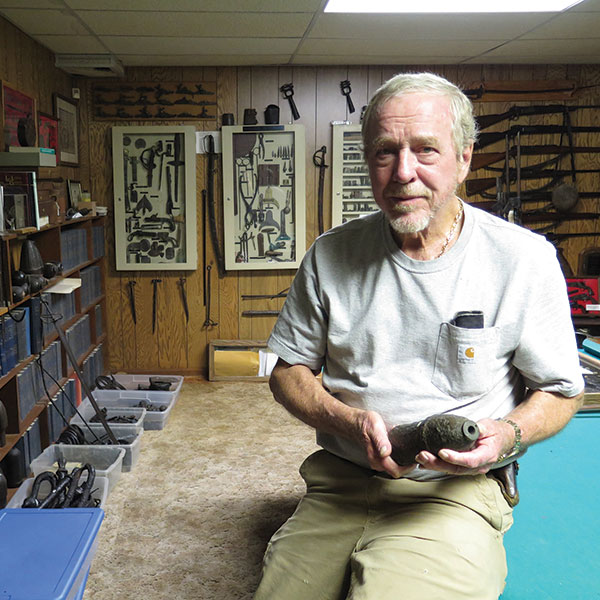
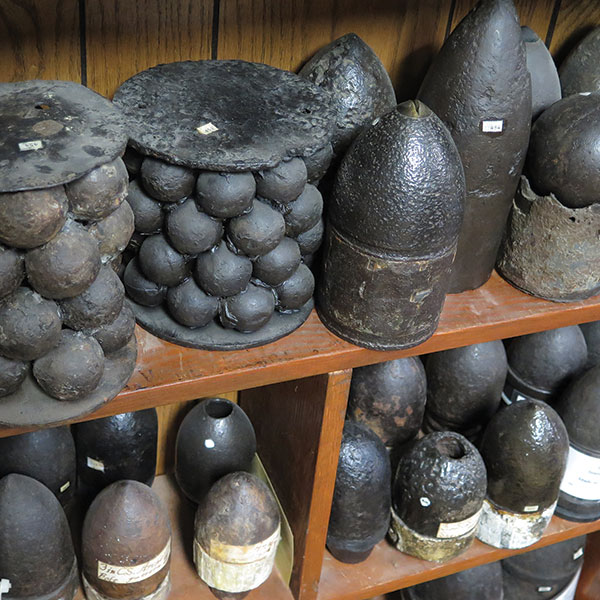
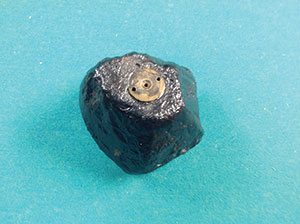
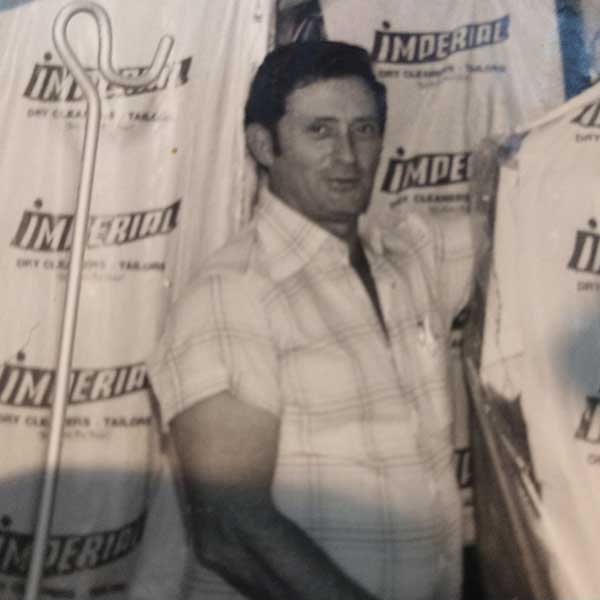
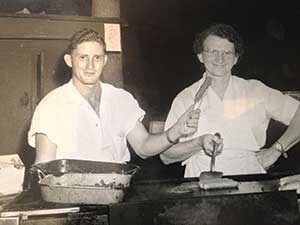

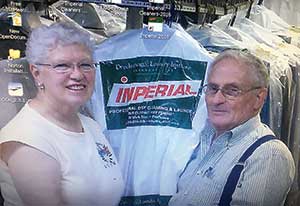
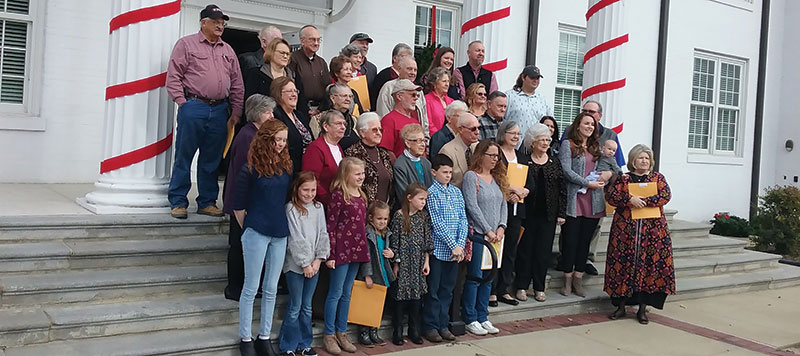
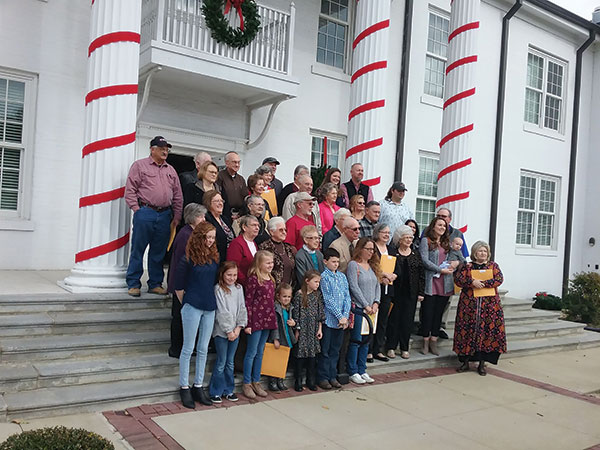
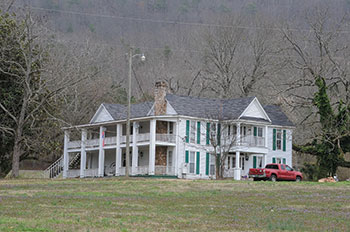
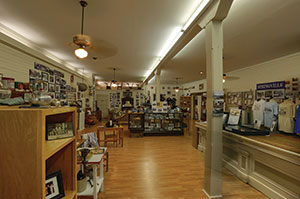
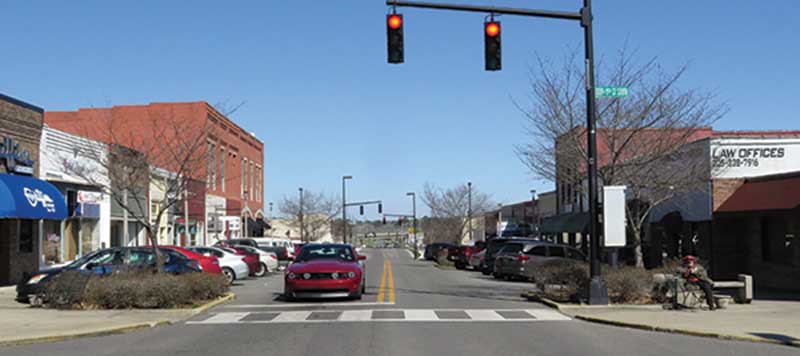
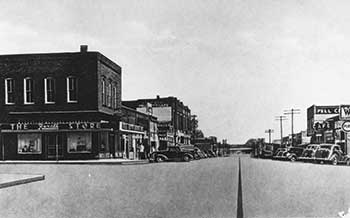
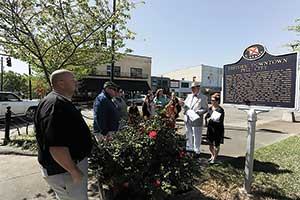
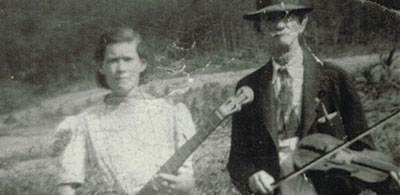
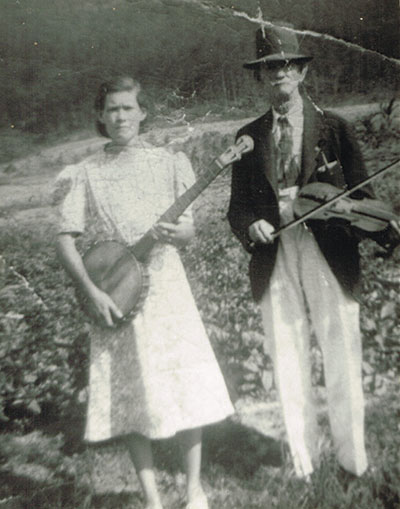 A pinnacle of St. Clair History
A pinnacle of St. Clair History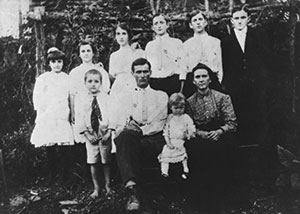 The date that Mt. Lebanon Church started worshiping together is not known, but they likely met in the Mt. Lebanon school building. It is known that the Mt. Lebanon First Congregational Methodist Church officially organized in July 1905 and that William Robinson, a Congregational minister, would come from Georgia to the mountain to visit his Robinson relatives. While on these visits, he conducted revival meetings, and one of these revival meetings culminated in the establishing of Mt. Lebanon Church. William Robinson served as the first pastor from 1905 to 1911.
The date that Mt. Lebanon Church started worshiping together is not known, but they likely met in the Mt. Lebanon school building. It is known that the Mt. Lebanon First Congregational Methodist Church officially organized in July 1905 and that William Robinson, a Congregational minister, would come from Georgia to the mountain to visit his Robinson relatives. While on these visits, he conducted revival meetings, and one of these revival meetings culminated in the establishing of Mt. Lebanon Church. William Robinson served as the first pastor from 1905 to 1911.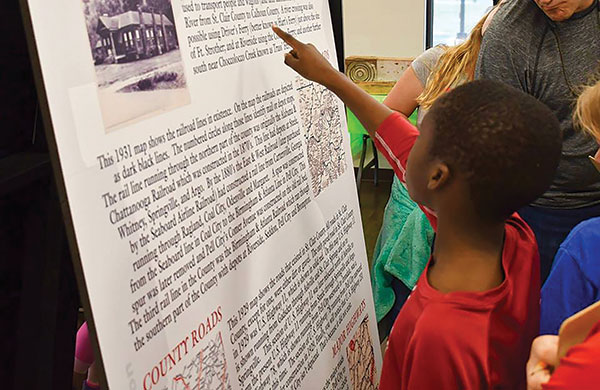
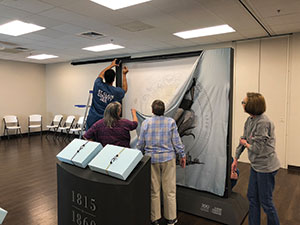 “Putting on something like this takes the efforts of several folks. Fortunately, we had a wonderful committee that volunteered a lot of hours to put this event together and be a part of it while it was exhibited,” said St. Clair County District Judge Alan Furr, who chaired the committee.
“Putting on something like this takes the efforts of several folks. Fortunately, we had a wonderful committee that volunteered a lot of hours to put this event together and be a part of it while it was exhibited,” said St. Clair County District Judge Alan Furr, who chaired the committee.